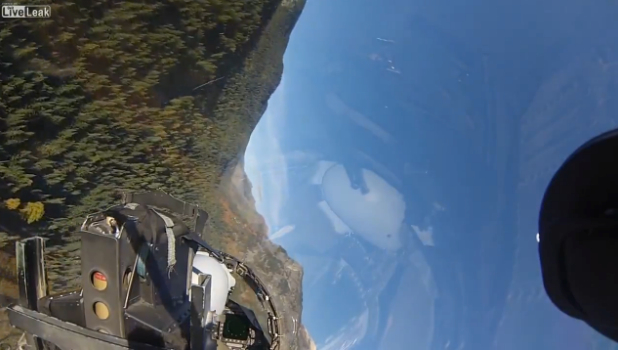Think twice before watching this video if you suffer motion sickness.
Although most of the recent war scenarios involved stealth multi-role jets with standoff weapons, drones, cyberwar, electronic warfare, etc., it’s been the fleet of conventional, unstealthy fighter bombers to carry the burden of the air strikes against the enemy.
For instance, whilst F-22 Raptors, at their baptism of fire, made the news during the opening stages of Operation Inherent Resolve, U.S. Air Force F-15E Strike Eagles (along with B-1s, F-16s, Navy’s F/A-18E/F Super Hornets, Legacy Hornets and some other tactical planes) carried out the majority of the missions against ISIS targets in Syria and Iraq.
Indeed, although far from being radar-evading, Strike Eagles can carry more weaponry than the F-22s and for this reason, when enemy air defenses are either suppressed or don’t pose a real threat, F-15Es are dispatched to take care of multiple ground targets during the same sortie.
The fact that they usually fly at medium or high altitude with PGMs (Precision Guided Munitions), because of the lack of anti-aircraft threats, doesn’t imply F-15Es no longer need to train at ultra low-level: for example, low altitude flying is required to survive an engagement by enemy fighter planes or an IR guided missile in combat, or to keep visual contact with the ground and VMC (Visual Meteorological Conditions) during a stateside training mission.
The following video shot with GoPro cameras brings you aboard a 366th Fighter Wing Strike Eagle during one of those ultra low-level training hops through the valleys, from the high performance take off to the formation landing.









